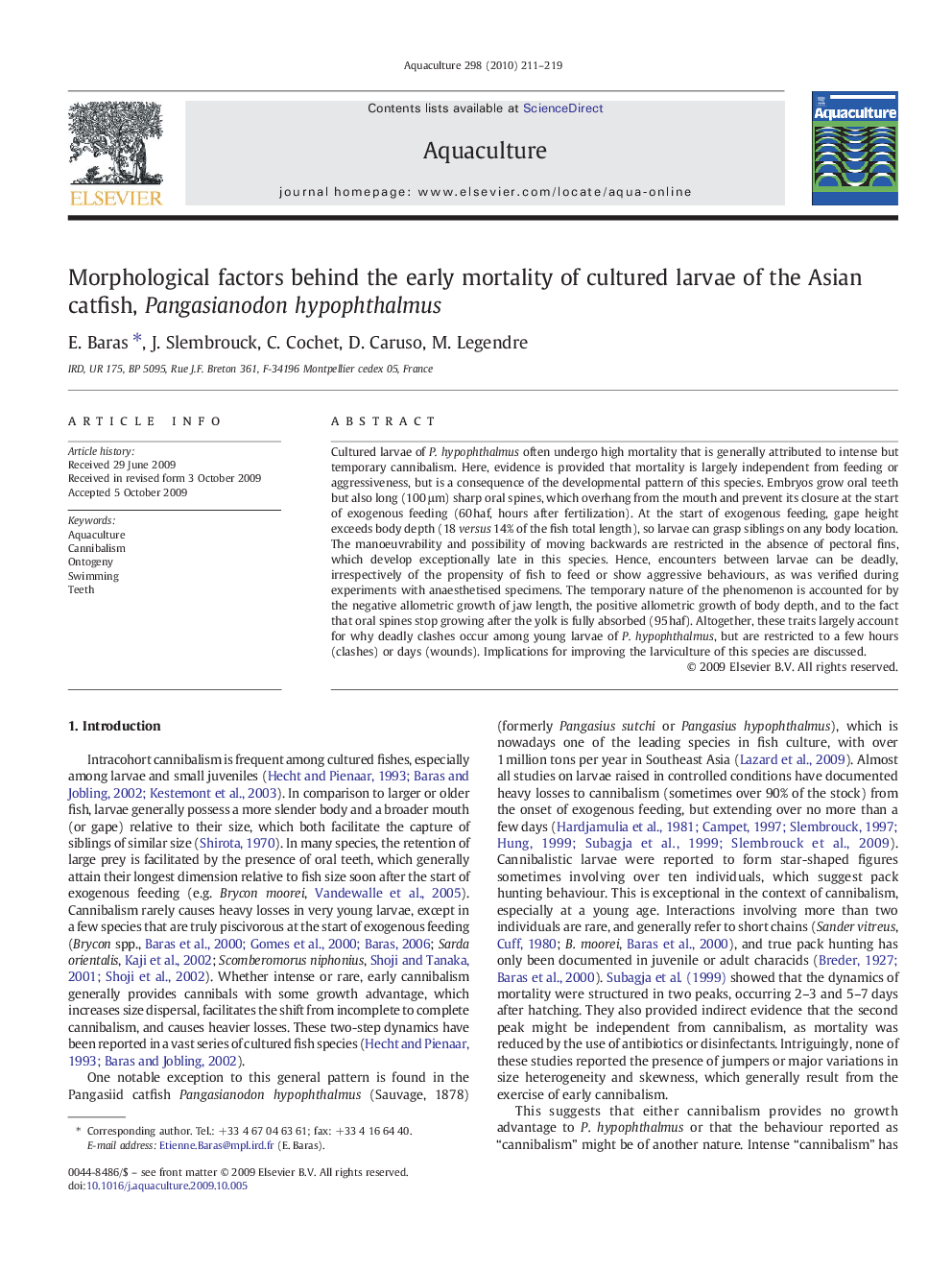| کد مقاله | کد نشریه | سال انتشار | مقاله انگلیسی | نسخه تمام متن |
|---|---|---|---|---|
| 2423905 | 1552931 | 2010 | 9 صفحه PDF | دانلود رایگان |

Cultured larvae of P. hypophthalmus often undergo high mortality that is generally attributed to intense but temporary cannibalism. Here, evidence is provided that mortality is largely independent from feeding or aggressiveness, but is a consequence of the developmental pattern of this species. Embryos grow oral teeth but also long (100 μm) sharp oral spines, which overhang from the mouth and prevent its closure at the start of exogenous feeding (60 haf, hours after fertilization). At the start of exogenous feeding, gape height exceeds body depth (18 versus 14% of the fish total length), so larvae can grasp siblings on any body location. The manoeuvrability and possibility of moving backwards are restricted in the absence of pectoral fins, which develop exceptionally late in this species. Hence, encounters between larvae can be deadly, irrespectively of the propensity of fish to feed or show aggressive behaviours, as was verified during experiments with anaesthetised specimens. The temporary nature of the phenomenon is accounted for by the negative allometric growth of jaw length, the positive allometric growth of body depth, and to the fact that oral spines stop growing after the yolk is fully absorbed (95 haf). Altogether, these traits largely account for why deadly clashes occur among young larvae of P. hypophthalmus, but are restricted to a few hours (clashes) or days (wounds). Implications for improving the larviculture of this species are discussed.
Journal: Aquaculture - Volume 298, Issues 3–4, 7 January 2010, Pages 211–219